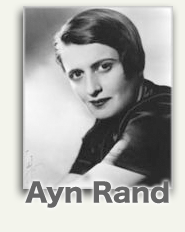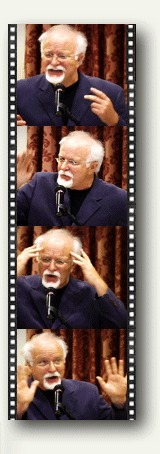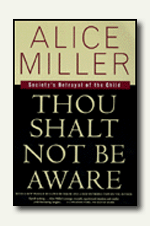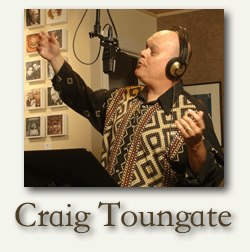by Gary Powell

Be self-determined.
Make your own path.
The cream rises to the top.
Nobody can do it like you can.
Everybody gets their turn at bat.
Follow your heart.
You deserve a gold star.
We’ve all heard these pearls of wisdom and found ourselves naively depending on them throughout our varied careers. Your personal pursuit of happiness is at stake with these words and, disheartening as it may feel, it might be time to move from colloquialisms to maxims. In legal terms, this would be explained as moving from hearsay to evidence.
Maxims are sayings which by definition are widely accepted for their own merit. Meritorious success is born of education, experience, trial and error, reason and risk. These things are accessible to nearly everyone. Colloquial success is born of accidents of either fortune or genetics. If you wish to trust your life’s work to fortune, then stop reading now. If you are trusting your life’s work to a genetic advantage, then you have already been born into aristocracy and can also quit reading now. All others, please continue.
Education and self-reflection are often shunned by artists. Please realize that education will eventually become self-directed, regardless of the academic art degrees you hold. Self-reflection is not about “what’s wrong with the world”, but more about “what in the world is wrong with me?” But let’s be good to ourselves and eliminate the judgment and just ask, “what in the world happened to me?”. A career in the arts has special considerations, some psychological, some in business organization, some in education and some in self-reflection. Understanding it all will help you in your pursuit of happiness. So, let’s try to understand what hurts us and what helps us as we begin to “go public” with our art.
Everybody gets their turn at bat.
(As long as they know how to build a bat and have hired a pitcher.)
By way of elucidation, IMAGINE there are only two types of artists across all artistic disciplines. Both types consider themselves artists. For now, let’s call them Adagio and Grandioso artists. The Adagio artist creates for their own edification and understanding, finding meaning through their expression of either the wonder or disenchantment of life or both. This artist’s validity comes from within and are more likely to be painters, writers, composers, sculptors and printmakers. The Adagio artist can be found working in their studios.
The Grandioso artist creates in order to be “seen”. Their art is a vehicle within the complex framework of their own ambitious goals both defined and fueled by their emotional needs. This artist might be either more or less talented than the Adagio artist. However, this artist’s validity comes from outside themselves and are more likely to be singers, dancers, comedians, and performers. Psychologists might describe these artists as being “other identified”. The Grandioso artist can be found working in television, theatres and movies.
en·tre·pre·neur, n. [ahn-truh-pruh-nur-ship] Etymology: French, from Old French, from entreprendre to undertake: one who organizes, manages, and assumes the risks of a business or enterprise
It’s possible that neither type of artist thinks of themselves as entrepreneurs. Some do and balance art and business beautifully. Some turn an early inspirational expression into a business so well that the inspiration eventually morphs into an assembly line. Some artists go straight to work on the assembly line and like, Norma Rae, finally rebel with a resolved “NO MORE”, move to Marfa, Texas and reinvent themselves living lives without focus groups or reviewers…. finally determining their own validity.
Most “Grandioso” or performing artists have been tap dancing for the family since they were born. This encouragement taught us to look outside ourselves for applause and adoring faces. Healthy children will all go through a developmentally appropriate “narcissistic period”. This developmental phase is important and will serve us well throughout our lives. However, many become stuck in their narcissism which will begin to erode their healthy adult relationships later in life. Narcissism, often misinterpreted as self-love, is described by the story of Narcissus, when he sees and falls in love with his own reflection in the river. However, behind the outward self-love that narcissists present to the world is a darker and malignant self-hatred which is kept under constant surveillance so as NOT to become visible to the world.
Enlisted into service are press agents, designers, managers, ghost writers, dentists and cosmetic surgeons, all becoming the army to fight back the damaged hidden self within. Maybe it’s time to watch the “mirror, mirror on the wall, whose the fairest of them all?” scene from Snow White again with this perspective. How about “The Portrait of Dorian Gray”? Only if we could all keep our hidden portraits in the attic or in modern-day terms, hire enough handlers to keep the ugly contained. Think of this the next time you see a celebrity with a posse.
Entrepreneurs think of themselves and their mission or products in context of nearly everything. They build relationships with every kind of person and service required to bring their newest hair dryer, radial tire or ART to market. The monumental effort of bringing a new product to market is seldom mentioned in our popular culture. As a culture stuck in our own adolescence, we simply want the new stuff.
People rant about gasoline prices with no knowledge of what it takes to suck oil out of solid rock five miles deep while balancing on an off-shore platform.  Then there’s that small matter for transporting crude oil some 5,000 miles to a rather expensive factory (which is often larger than the Texas town it’s in) and refining it into gasoline. Let’s see now, how can we deliver this gasoline across the country and to neighborhoods to better serve our customers and increase our profits?
Then there’s that small matter for transporting crude oil some 5,000 miles to a rather expensive factory (which is often larger than the Texas town it’s in) and refining it into gasoline. Let’s see now, how can we deliver this gasoline across the country and to neighborhoods to better serve our customers and increase our profits?
As artists, we have much to learn about the mechanics of business which, regardless of size, always include investment, risk and thousands of absolutely brilliant humans. If you think that your art is what it’s all about, then there is one of those large pieces of reality headed your way like that extinction-event asteroid 65 million years ago.
EDUCATION either functions as an instrument which is used to facilitate integration of the younger generation into the logic of the present system and bring about conformity or… it becomes the practice of freedom, the means by which men and women deal critically and creatively with reality and discover how to participate in the transformation of their world.
– Paulo Freire
Regardless of whether you find resonance with the Adagio artist or the Grandioso artist or both, I’m suggesting that you gently, without harsh judgment on yourself, start seeing your art and yourself within the context of everything, particularly the very typical yet monumental effort of the entrepreneur. You don’t have to join any group, give up your individualism, pray, march or vote like anyone else. I am suggesting that we artists make a very conscious move to study entrepreneurship and apply that knowledge to our artistic endeavors. And, even more important, the effort might just help purge any of our residual and unconscious narcissism. It is certain to benefit us personally, professionally and artistically to begin envisioning ourselves within the larger context of the human experience.
For further study on the topics presented, please consider these links:
Any artist wishing to learn the nuts and bolts of entrepreneurship will find this PBSYOU program most helpful and pertinent to your artistic endeavors:
Entrepreneurship Classes on PBSYOU
Writer, Shmuel (Sam) Vaknin, is an excellent resource across the topics of psychology, philosophy, economics and geopolitics and has published hundreds of professional articles in both print and web periodicals in many countries.
Authors Julia Cameron and Mark Bryan offer
the acclaimed book series, “The Artist’s Way”.
The purpose of the Myers-Briggs Type Indicator® (MBTI) personality inventory is to make the theory of psychological types described by Carl Jung understandable and useful in people’s lives.
Seemingly based on Myers-Briggs, David Keirsey’s “Theory of Four Temperaments” is organized across different professions in a way that is germane to our discussion here.
Thank you to The Department of Earth and Sciences
at the University of Liverpool for the beautiful oil rig photograph.
All Content of Gary Powell’s Site is Licensed Under a
Creative Commons Attribution-NonCommercial-NoDerivs 2.5 License

.
 The people you meet on my site are on the whole more competent than lucky. In that regard, we can learn from them. There is little to learn from someone who was simply born to success or from someone who rolled everything they owned on a “hard-eight” and won! If you are not a legacy, are not royalty, have no trust fund, don’t vacation in Vegas and your uncle’s first name is not “Senator”, then this new category might soon become your favorite.
The people you meet on my site are on the whole more competent than lucky. In that regard, we can learn from them. There is little to learn from someone who was simply born to success or from someone who rolled everything they owned on a “hard-eight” and won! If you are not a legacy, are not royalty, have no trust fund, don’t vacation in Vegas and your uncle’s first name is not “Senator”, then this new category might soon become your favorite.
 I learned to sing in Huntsville, Texas…..in prison…..the women’s prison. It was my first teaching job at the Wyndham School District inside the Goree Unit, the former women’s prison within the Texas Department of Corrections. Little did I know that a boy from Highland Park, Dallas, would learn so much in that place. I owe much to those women, who gently introduced me to a world I didn’t know existed.
I learned to sing in Huntsville, Texas…..in prison…..the women’s prison. It was my first teaching job at the Wyndham School District inside the Goree Unit, the former women’s prison within the Texas Department of Corrections. Little did I know that a boy from Highland Park, Dallas, would learn so much in that place. I owe much to those women, who gently introduced me to a world I didn’t know existed.


 Dennis Razze
Dennis Razze
 Academics are accused in the creative arts of being too “left-brained”. On the street, this term defines people who are close-minded, uptight egg-heads who kill all our natural creative impulses. These creatively repressed individuals live within the confines of the confines of the confines of the out-of-touch and intellectually disconnected. Everyone who has been educated can certainly name professors who deserve this description. There is a disappointing consequence of this widely held viewpoint: When standing at the academic well, many young, creative people decide that no water is better than drinking bad water.
Academics are accused in the creative arts of being too “left-brained”. On the street, this term defines people who are close-minded, uptight egg-heads who kill all our natural creative impulses. These creatively repressed individuals live within the confines of the confines of the confines of the out-of-touch and intellectually disconnected. Everyone who has been educated can certainly name professors who deserve this description. There is a disappointing consequence of this widely held viewpoint: When standing at the academic well, many young, creative people decide that no water is better than drinking bad water.

 Then there’s that small matter for transporting crude oil some 5,000 miles to a rather expensive factory (which is often larger than the Texas town it’s in) and refining it into gasoline. Let’s see now, how can we deliver this gasoline across the country and to neighborhoods to better serve our customers and increase our profits?
Then there’s that small matter for transporting crude oil some 5,000 miles to a rather expensive factory (which is often larger than the Texas town it’s in) and refining it into gasoline. Let’s see now, how can we deliver this gasoline across the country and to neighborhoods to better serve our customers and increase our profits? Jesmax Music, BMI, owned by composer Gary Powell, is pleased to have placed the Craig Toungate song “The Laughing Song” on Walt Disney Records’ CD entitled “Disney’s Merry Little Christmas” which is exclusively sold at retail Target stores.
Jesmax Music, BMI, owned by composer Gary Powell, is pleased to have placed the Craig Toungate song “The Laughing Song” on Walt Disney Records’ CD entitled “Disney’s Merry Little Christmas” which is exclusively sold at retail Target stores.